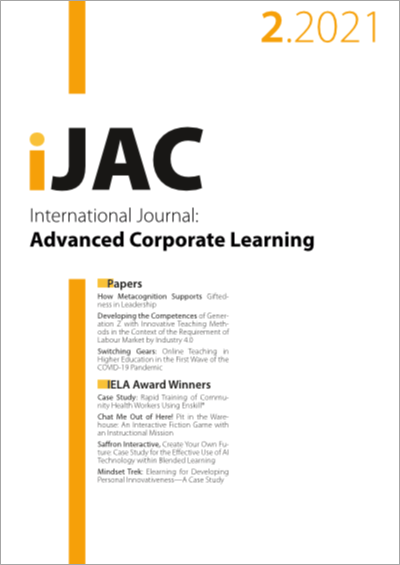Switching Gears
Online Teaching in Higher Education in the First Wave of the COVID-19 Pandemic
DOI:
https://doi.org/10.3991/ijac.v14i2.24085Keywords:
Covid-19 crisis in higher education, online teaching, remote teaching, online classroom management, teaching with technology, online didactics, teaching during lockdown, STEM online education, challenges in online teaching,Abstract
In March 2020, the COVID-19 pandemic turned into an urgent priority for higher education institutions in that they had to move to remote teaching within a matter of weeks. This paper presents the results of a quantitative survey looking at the challenges university faculty were facing when moving their course(s) online during the first semester of the COVID-19 crisis.
The survey looks specifically at course design and formats used in online teaching during the crisis and compares differences occurring between disciplines (STEM and management education). The outcomes overall mirror a sense of achievement due to the successful delivery of online courses with little preparation. Difficulties lecturers identified were related to promoting student interaction and engagement, technical issues, the effort required to plan and prepare online learning materials, and challenges with regard to online assessment. Having access to training and support in various forms was highlighted as an important success factor.
Downloads
Published
How to Cite
Issue
Section
License
Copyright (c) 2021 Claudia Moessenlechner, Regina Obexer, Maria Pammer, Julia Waldegger

This work is licensed under a Creative Commons Attribution 4.0 International License.



